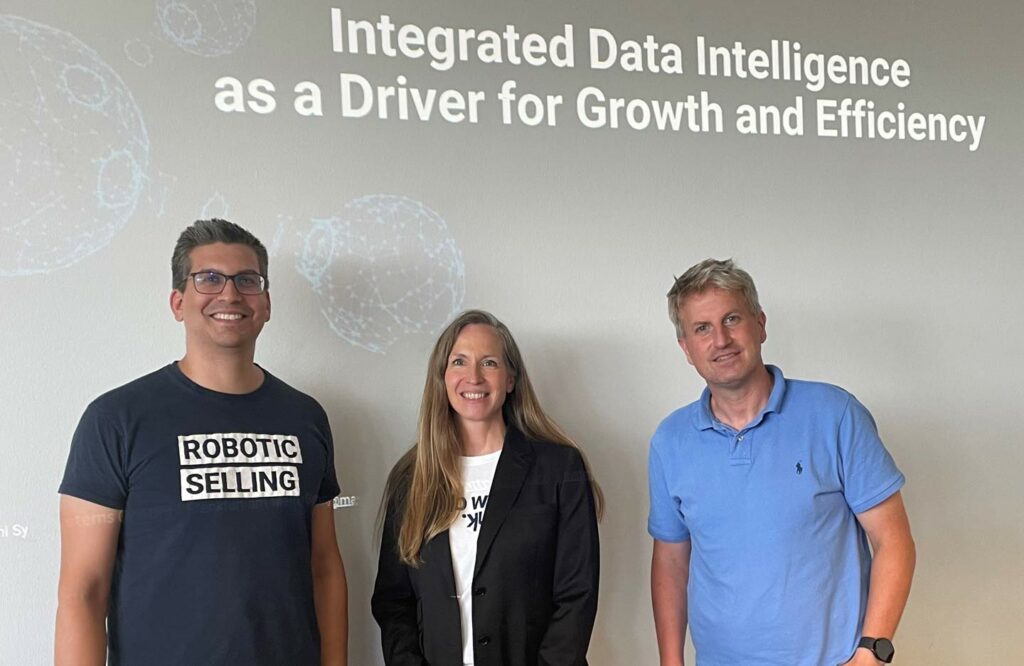Customer Data Platforms (CDP) are not a new technical achievement. What is new, however, is that these platforms have evolved significantly over the past few years. The current generation is no longer a pure marketing tool: Modern CDPs combine marketing and sales.
CDPs have become important because customers’ expectations of companies have increased – no matter what channel or touchpoint they use. Due to the growing number of channels and data sources, the number of systems has also increased. So it becomes difficult to gain a consistent picture of the customer. A CDP can help with exactly that. In it, companies pool and consolidate all customer data. But the latest CDPs do even more. They overcome the boundaries between marketing and sales, automate customer-relevant processes and even enable intelligent robotic selling – automated sales preparation. Data analytics, complex decision logics and machine learning are used to achieve this. But what is important to consider when implementing a CDP? The following four tips will help.
Do not necessarily replace existing systems
Replacing or changing an IT system is a major challenge for many companies. However, with the help of a modern CDP, the changeover is easier. For example, if functions are missing, they can be easily integrated as needed. However, if there is a desire to replace an old system, companies can first integrate the new tool in parallel with the old one, synchronize the data and gradually move the processes. Once everything has been transferred to the new system, the old one is obsolete. Solutions that can be connected to a CDP include, for example:
- Web Analytics
- Marketing Automation
- Customer Relationship Management (CRM)
- Enterprise Resource Planning (ERP)
- Webshop
- Service database
Leverage existing adapters and no-code approaches
For a successful integration of the CDP, the connection of the systems must be simple. The first step is to define the systems to be connected, select the appropriate adapters and set up plans for synchronization. Here, companies define which data fields are to be synchronized and the frequency with which this should take place. At the same time, companies decide here whether synchronization is time-controlled or triggered by an event – for example, by reaching sales maturity or by creating or changing a data field. If required, data is transformed, entries are made or actions are triggered during synchronization. Ideally, the synchronizing systems are connected and the data fields are assigned according to the no-code approach – i.e. simply by configuration and without any programming effort. It is irrelevant whether the systems to be connected are operated in the cloud or on-premises. Companies do not have to integrate all the desired systems and functions at once. A step-by-step approach is even more advisable. This improves change management within the company and increases the benefits of the newly introduced technology.
Clean, consolidate and enrich data
For a CDP to function as expected, it is important to cleanse and consolidate the data. This results in the so-called “golden record”. If this data is then enriched with transaction and interaction data, the “golden profile” of the customer is created in the CDP. Customer profiles can be enriched with additional data (e.g., industry code, sales, “look-alike companies”). To do this, companies integrate the services of data service providers into the CDP and the processes. If necessary, all cleaned and enriched customer data can then be transferred back from CDP to the various source systems (bidirectional synchronization).
Add Robotic Selling
With the Golden Profile or the Golden Record for each customer, companies have already gained a lot. But as an integration platform, modern CDPs open up completely different possibilities: They overcome the old boundaries between marketing and sales. If the data is available consistently and the systems are cleanly integrated, sales-relevant processes can be automated and intelligently controlled across systems. The complex decision-making logics in these processes make use of technologies such as machine learning and predictive analytics. In this way, robotic selling can optimally support the work in marketing and sales.
With modern Customer Data Platforms, companies expand their sales potential and increase their revenues. With a flexible CDP, a company can integrate exactly the systems and create the automated sales processes it needs. For more information on how modern CDPs help companies, read the free eBook “CDP enables Robotic Selling – How to build a solid foundation for Robotic Selling with a Customer Data Platform (CDP)”.



